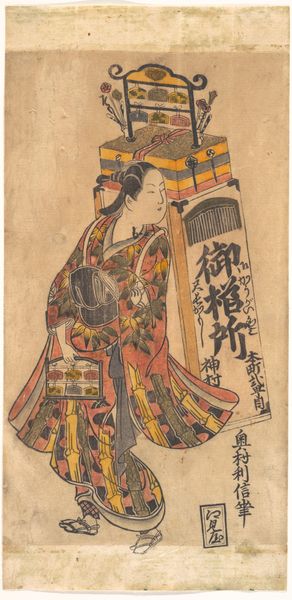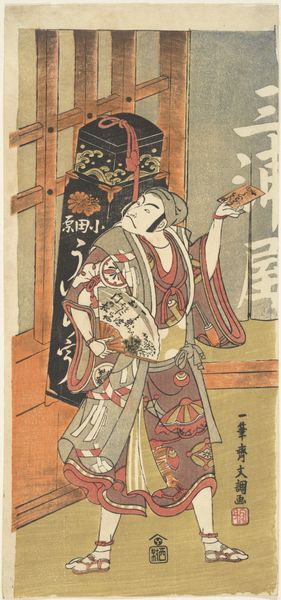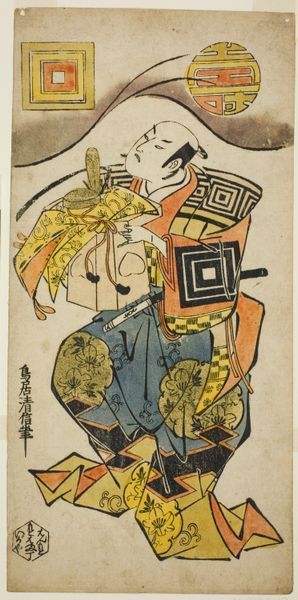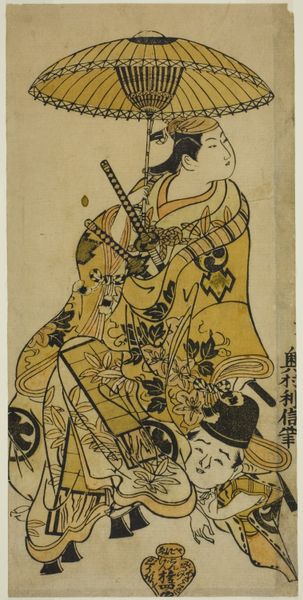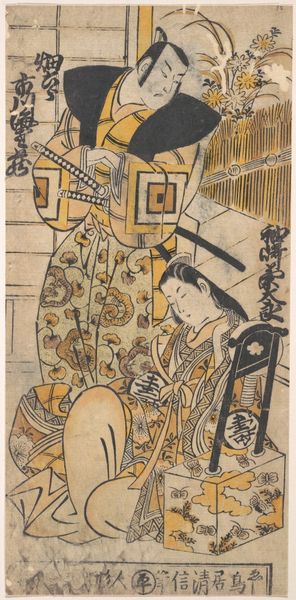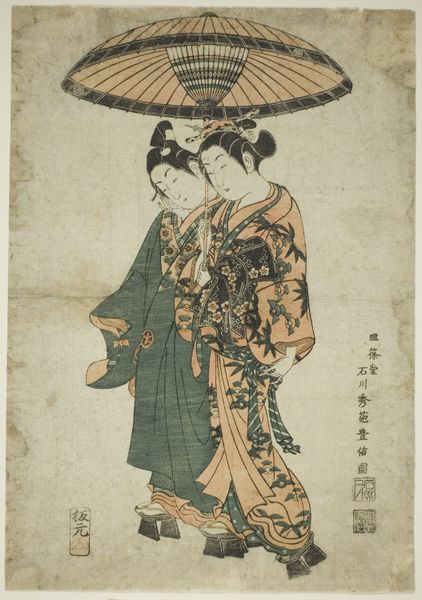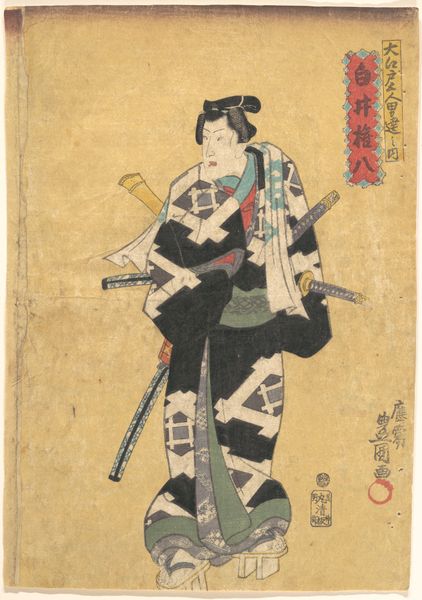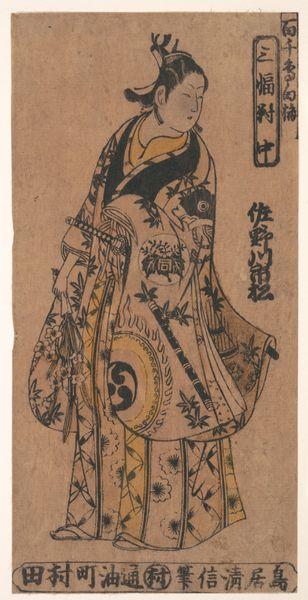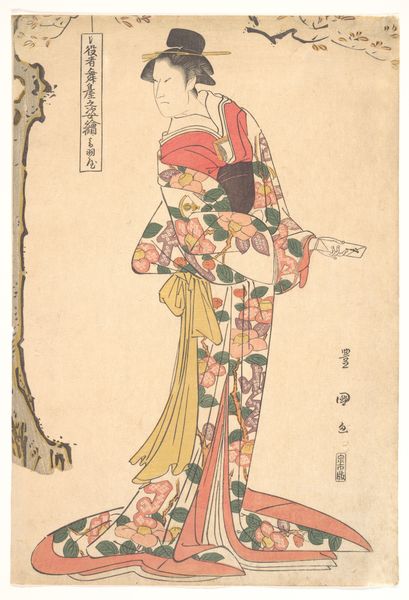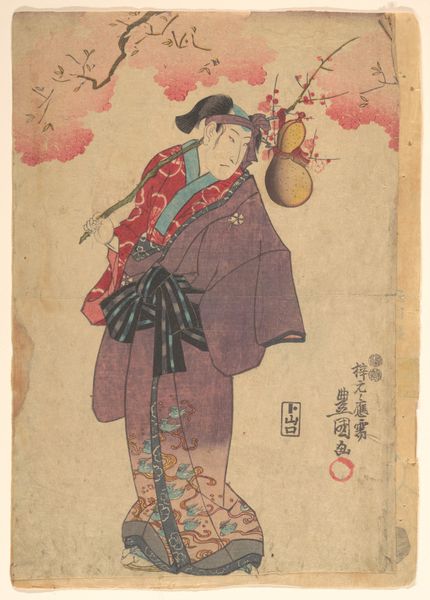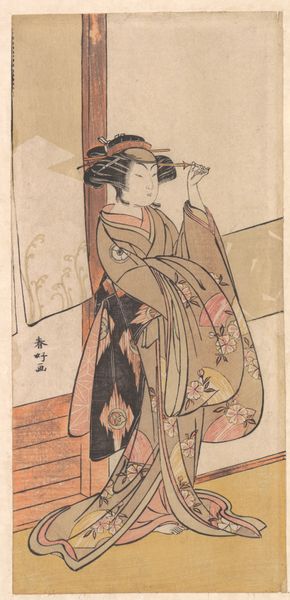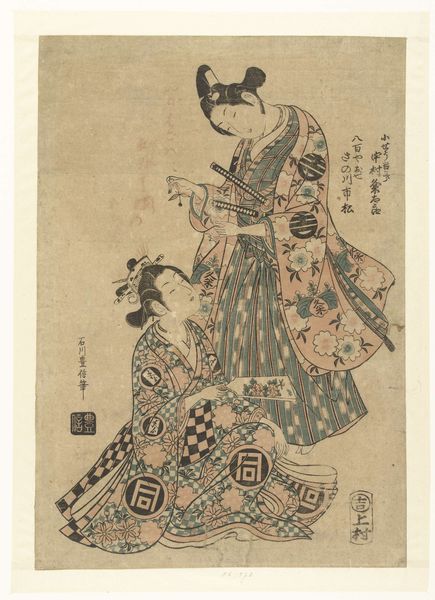
Actor (unidentified) as a Peddler of Dry Goods 1718 - 1738
0:00
0:00
print, woodcut
# print
#
asian-art
#
ukiyo-e
#
figuration
#
woodcut
Dimensions: Overall: 13 x 6in. (33 x 15.2cm)
Copyright: Public Domain
Editor: Here we have *Actor (unidentified) as a Peddler of Dry Goods*, a woodcut print by Okumura Toshinobu, made sometime between 1718 and 1738. I’m immediately struck by the detail – it looks incredibly intricate, and seems to represent someone hard at work. What catches your eye when you look at this? Curator: Well, looking at this from a materialist perspective, the very act of creating this print is fascinating. We see an incredible level of detail achieved through the labor-intensive process of woodblock printing. Consider the skill involved in carving these delicate lines, transferring the image to paper, and the social context surrounding the production and consumption of such prints in 18th-century Japan. This was not simply "high art," but a commodity created through specific means of production for a particular market. Editor: That’s a side I hadn't considered. I was more focused on the figure and the artistic skill itself. Is the printing process significant because it blurs the distinction between art and commodity? Curator: Precisely! The *Ukiyo-e* tradition challenges our typical Western notions about fine art. How does the figure's clothing speak to that blurring of art and material culture? Editor: His robe, or at least the design, almost resembles city buildings, and he’s carrying so much, that I find interesting now that you point it out. I initially didn't register it as work, more a performance. Curator: The clothing itself becomes a site of consumption and social commentary. Thinking about it now, this image asks: What labour created this? What materials comprise it? For whom was this print intended? It makes me think of a kind of 18th-century advertisement for dry goods, consumed in a new and interesting way. Editor: That gives me a whole new perspective on it. I was concentrating on the individual actor, and completely missed all the societal and commodity connections. It shows how important understanding the means of production is.
Comments
No comments
Be the first to comment and join the conversation on the ultimate creative platform.

